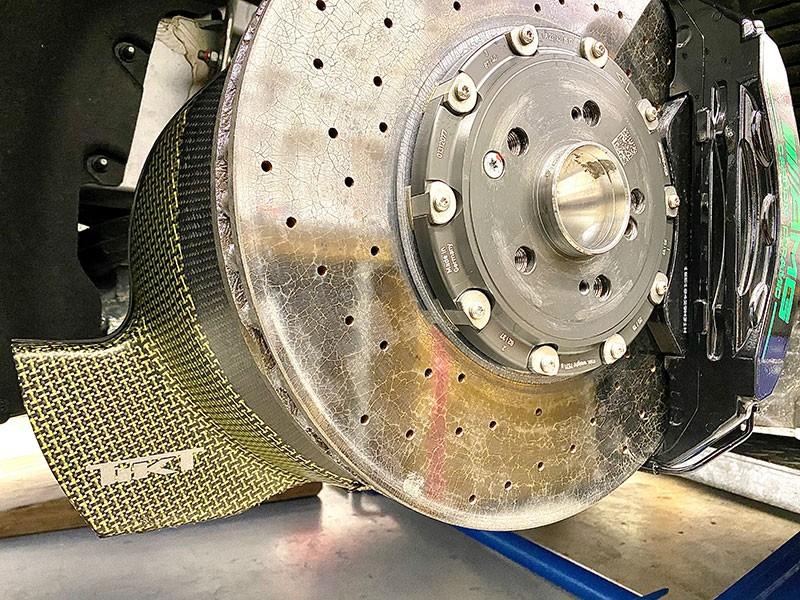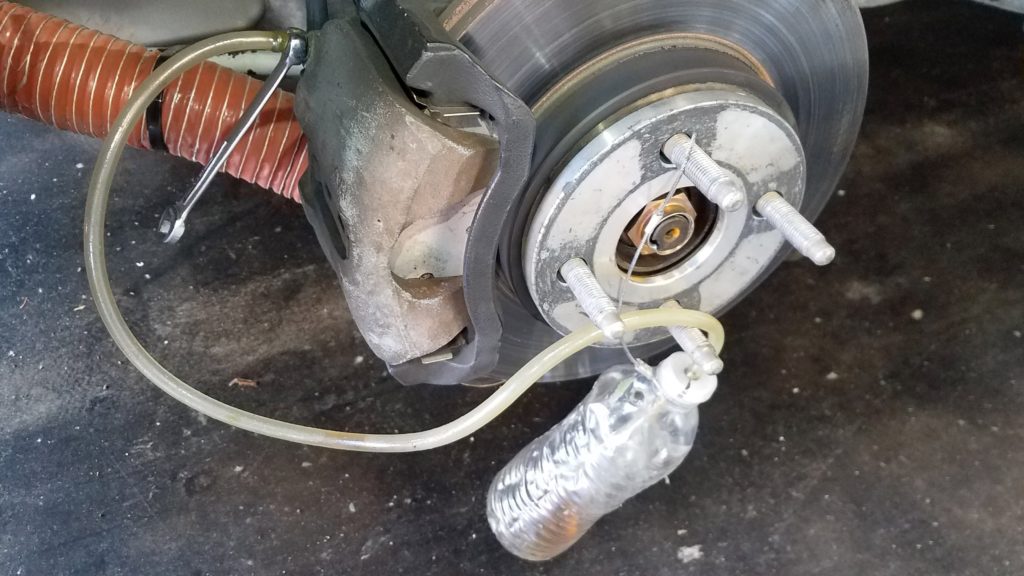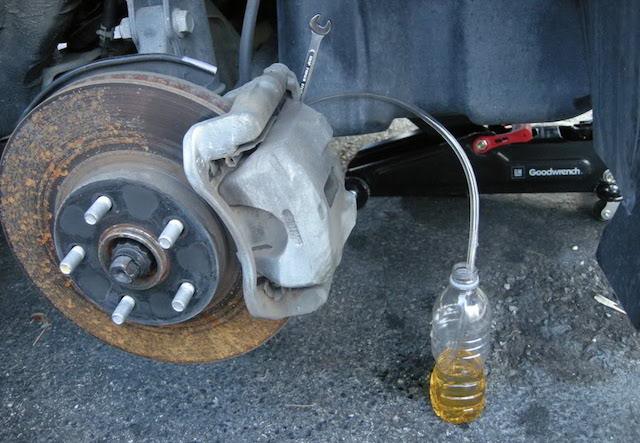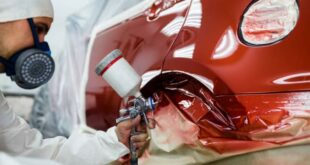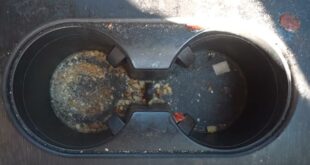The car's brakes are no longer working properly and need to be bled? Do you have the feeling that the brake pedal feels spongy? When checking the brake fluid, you will find that the fluid level is too low? If the fluid level in the brake master cylinder is too low, air bubbles can form and significantly reduce braking power. Have someone look at the problem as soon as possible. Removing the air bubbles restores the full stopping power of the hydraulic brakes. Here's a quick guide on how to properly bleed your brakes yourself.
What you need!
- a helper
- a wrench
- 1 x spacer for brake pedal approx. 2×10 cm
- 2 x cans of 240 ml brake fluid each
- a frying pan
- a clear plastic tube
- a transparent plastic bottle
How do I start!
You will see a light colored reservoir with a black cap in the engine compartment, this is the master cylinder reservoir. Remove the lid. With the help of an old roasting syringe (suction syringe) you can now suck out the liquid. Try to siphon off as much of the old liquid as you can as it gradually gets darker and darker. It is then important to wipe off any residue from the brake fluid reservoir and its cap with a clean, lint-free cloth clean. Use brake fluid not nearby painted surfaces as they can destroy them. Fill the master cylinder with new brake fluid. Put the lid back on once you're done. Depress the brake pedal with about 15 pumps. Then loosen the vent valve. Use one Toolsthat fits into the bleed screw, like a box wrench, but keep it closed for now. Tip: If you lubricate the bleed screw a little the day before, it will be easier to loosen.
Now insert a piece of transparent plastic tube (Silicone/aquarium tubing works well) on the bleed screw. Hang the other end of the hose in a transparent plastic bottle. You should fill this bottle with about 3-6 cm of brake fluid beforehand. In order to avoid Note that air may be sucked back into the brake cylinder. When you start bleeding, place the spacer under the brake pedal to keep it from pushing down too far. Now you can put the lid back on the container. Now you need someone to help you. Have the person sit in the car and slowly press and hold the brake pedal with even pressure. The person should below call when the brake pedal is down as far as it will go. However, the person should don't use too much force. Starting with the rear right wheel, attach the hose to the appropriate bleed screw and turn counterclockwise XNUMX/XNUMX turn. Air bubbles and old brake fluid appear in the hose connected to the bottle, no more fluid comes out, close the valve.
Tell your helpers in the vehicle that the brake pedal will drop when you start bleeding. The helper should now take their foot off the pedal. The pedal moves up. This process is repeated until the brake fluid becomes transparent. Brake fluid can be refilled whenever the brake pedal is pressed five times. Have your helper count out loud as they press the pedal. Then tighten the bleed screw tight again. Now repeat these steps on all wheels (rear left wheel, front right wheel, front left wheel). When the brake system has been bled through all valves, they are done.
Working in pairs is advisable and can avoid unwanted mistakes. Four eyes see more than two. And if something goes wrong and you get injured, a helping hand is beneficial. Handing out tools and other necessary utensils could also make the work easier. But you don't always have someone to help you. Then a "stahlbus ventilation system', which fixes the problem where it arises. Namely on the thread of the ventilation hole.
Here are some more tips:
- You should always start with the wheel farthest from the master cylinder.
- Always use a suitable wrench.
- The bleed screws can sometimes get very tight.
- If you are unsure, get help from a professional.
- There are complete brake bleed kits that you can use for as little as 5 euros.
- There are vehicles that require a special bleeding procedure due to their different valves and systems. To avoid damage or problems with your braking system, you should consult a professional before you put your hands on your braking system.
- Handling brake fluid is not without its dangers. You should try not to get them in your eyes.
- Brake fluid must always be collected in suitable containers and recycled appropriately.
- Always use the brake fluid that the manufacturer recommends for your car. The wrong brake fluid, for example mixing it up with engine oil, can have devastating consequences for the function of your brake system.
At the end I would like to say: "Braking systems are vital!” for you and your fellow human beings. While healthy self-confidence is a positive thing, it is by no means a substitute for professional expertise or the advice of a professional.
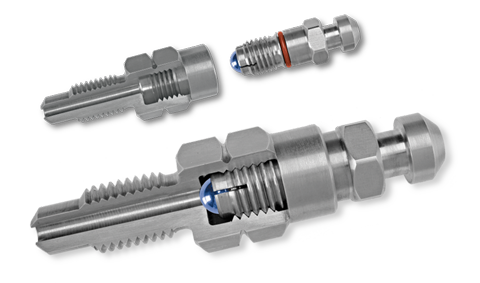
The following note is essential: For safety reasons, tuningblog recommends all repair, inspection and maintenance work exclusively to be carried out in a specialist workshop! Although our information is summarized to the best of our knowledge and belief, we cannot assume any liability for the content. All information is therefore "without guarantee".
Of course, that wasn't the end of it!
In this tuningblog category there are guides and instructions for common defects/repairs on the vehicle and for installing accessories/tuning parts. Our articles explain in a simple way common defects and the corresponding repairs, as well as explaining how the first signs of a defect become noticeable. In most cases, we also have initial clues to the repair instructions in our repair instructions approximate The costs of the pending repair are listed. The goal of our subcategory “Auto Repair Guide“ is to create a head start in knowledge for the next visit to the workshop with initial tips. This may save you from tedious troubleshooting and small things can perhaps be done directly on your own. The same applies, of course, to the installation of accessories/tuning parts. Here, too, we would like to help with the implementation with instructions and tips. There are many other posts on this as well. Below is an excerpt of the last and HERE there are all previous instructions:
"tuningblog.eu" - we keep you up to date on the subject of autotuning and car styling with our tuning magazine and present you with the latest tuned vehicles from all over the world every day. It's best to subscribe to ours Feed and will automatically be informed as soon as there is something new about this post, and of course also to all other contributions.
 tuningblog.eu Your magazine about tuning the car
tuningblog.eu Your magazine about tuning the car
